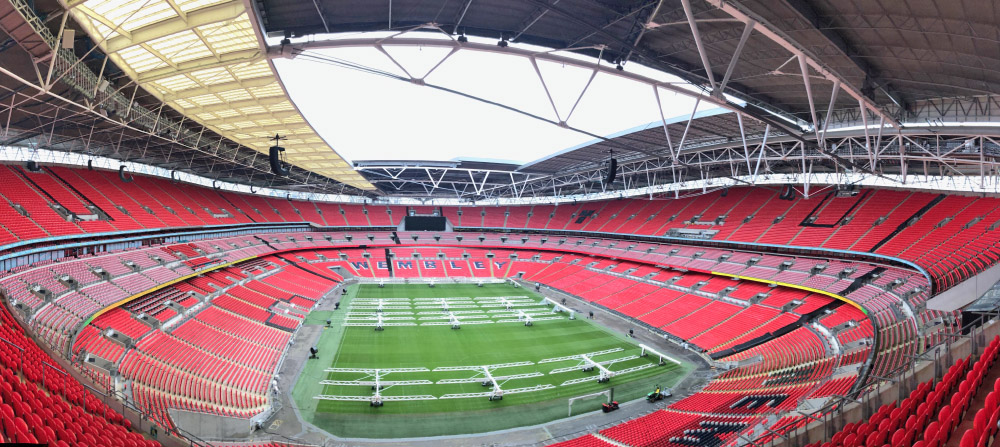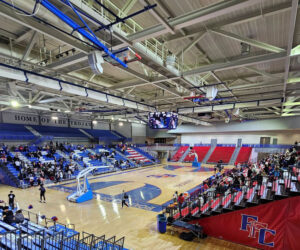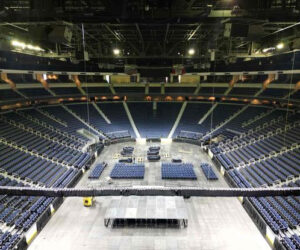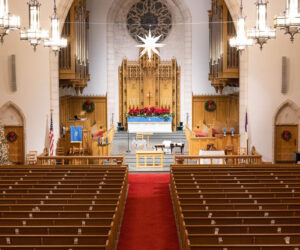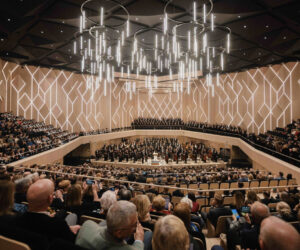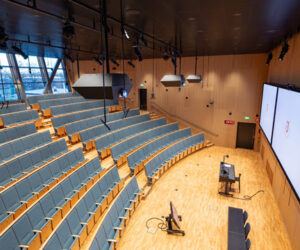Wembley Stadium in London, synonymous with hosting English football matches and top concert artists for crowds of up to 90,000, has been outfitted with a new venue-wide sound reinforcement system headed by d&b audiotechnik Special Version Stadium (SVS) V-Series and Y-Series line arrays.
“One area that we knew would add value to our guests and clients was upgrading the bowl audio,” explains stadium director Liam Boylan. “The previous system was not specifically designed to be used for the delivery of music and that was becoming increasingly apparent; we wanted to offer our clients a state-of-the-art system that they would never consider not using. d&b offered a solution that would elevate the audio experience for our fans — for all of our events — and thus keep our standards as high as possible.”
The design brief was straightforward: attain uniform coverage to every seat in the house from a system light enough to stay within roof loading limits while appealing to both music industry and sports organizations, and integrating with the existing network as part of the stadium’s life safety system.
Mervyn Nock, the audio visual manager for the Football Association (FA), the organization behind the FA Cup soccer competition, states, “With the d&b system, PAVA compliance was a given, so instead of thinking about baseline intelligibility we could focus on performance quality expectations. Before the installation, we rigged an array of d&b loudspeakers to give Wembley’s senior leadership team and various stakeholders an A-B comparison. The difference surpassed everyone’s expectations; not only was music much clearer, cleaner and brighter, but speech was so much more intelligible, more authoritative.”
Steve Jones, head of d&b Education and Application Support EMEA, provided the system design. “Because the Wembley bowl is so high and so steep we needed to propose a single system that was up to the task of properly covering the large vertical geometry from front row to the back of the upper tiers, provide horizontal consistency and be suitable for both sports events and augmenting concert productions,” he explains, adding, “I’d be asking what would the system do when it was in sports mode, and what did that full coverage need to be; and then with, in effect, a smaller array formed from the top cabinets, check that we still had a system that could deliver concert sound levels into the top tier. My next consideration was informed by our observations of concert productions at Wembley; the best results involved the deployment of a ring delay system.”
Jones set about honing his design, moving between the venue’s two principal modes of operation, and started asking a different set of questions. “This was the ‘light bulb moment’ when I realized that for optimum performance from a single system, I needed to talk to Wembley’s technology consultants, Vanguardia, about the possibility to rotate the arrays and deploy them at an overall lower height, in the North and South stands. Eventually, after lots of toing and froing, we were able to define the arrays’ optimal height and position to do both sports and concerts really, really well.”
Ultimately what Jones, in collaboration with Vanguardia, structural engineers OPS and integrator RG Jones has achieved is a two-for-one design. “Thanks to ArrayProcessing, it’s now possible for Wembley to create upper and lower zones, and to easily offer multiple performance layouts,” explains Jones. “And switch from sports mode to concert mode without any compromise in quality.”
The main loudspeaker system, including corner fills, comprises the previously noted Special Version Stadium (SVS) V-Series and Y-Series line arrays, which are acoustically identical to their standard versions, with extra protection for use in harsh environments and taking into consideration factors such as wind loads and seismic activity. The system integrates with Wembley’s existing control infrastructure via MediaMatrix.
An advantage is the ability to rotate the arrays. During sports events they’re in the default position, on axis with the spectators’ seating position, while in concert mode, they’re rotated to optimize the acoustic path between the stage and the audience in the upper tiers, enhancing the listening experience. The loudspeakers are driven by installation-specific 30D amplifiers housed on two 50-meter-high gantries running along the length of the pitch, alongside floodlights, control networks and power distribution, broadcast technology and IT infrastructure.
“Obviously with a new installation there is very little maintenance, but with the amplifiers’ system diagnostics functionality, the status of the system is relayed to the main PAVA maintenance graphical user interface and also onto the stadium’s building management system, instantly flagging any issues should they appear,” says Nock. “With so many different types of events at Wembley, d&b’s R1 software enables us to quickly configure the system and cater for any event specific PA requirements, for example reducing the sound levels in temporary press/broadcast locations.”
Installation
The sound system installation actually took place during winter 2019 by RG Jones. Three months were allocated to design, fabricate, and install the new system with several large projects taking place simultaneously including relaying the pitch and installing an LED floodlighting system. Due to the tight timescales and number of interfaces, the program was planned with a high level of detail. The project teams met daily to collaboratively resolve risks, address technical uncertainties, and to monitor safety, progress and quality.
Commissioning of system was completed in time for the EFL Carabao Cup Final in February 2020, just weeks before the first Covid-19 lockdown. “The program was delivered safely and to very tight timescales,” says Laurence Young, project manager, Wembley Stadium. “Coordination between contractors and the added risk of working at height were the biggest challenges but the installers and project teams, including d&b, were fantastic at working together and resolving any issues that we were faced with.
“For me, the moment that truly encapsulated what has been achieved was at the UEFA EURO 2020 Final and experiencing the d&b system, together with the new LED lighting system, in front of a capacity crowd.”
Following the Carabao Cup in March 2020, football at Wembley was audience-free or at significantly reduced capacity until UEFA EURO 2020 in June 2021, at which point resident DJ Tony Perry put the new audio system through its paces: “The sound at Wembley during EURO 2020 was incredible. I received messages from so many fans saying it was the ‘best atmosphere they’ve ever experienced at a football match’. This level of fan interaction would not have been possible without such an incredibly enhanced sound in the stadium.
“I’ve been fortunate to play at many stadiums. At Wembley this summer, there was a notable difference in clarity and depth,” he concludes. “Whether the stadium was at its lowest 20,000-cap (capacity) audience, or during the epic closing ceremony, the sound was remarkably well balanced. Perhaps what stood out most, was how the sound maintained clarity both at low level, and when being pushed to its loudest. It’s something I hadn’t experienced in a stadium environment before.”


